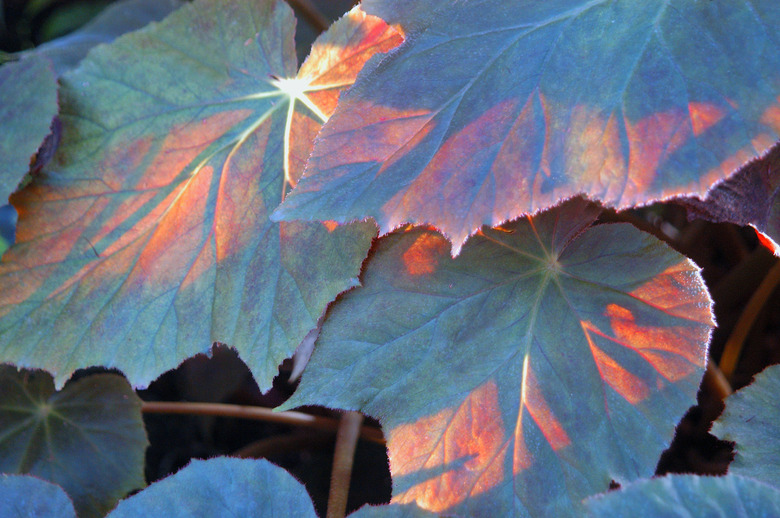How To Grow Grape Vines In Illinois
When you think of a grape-growing region, you might picture arid Mediterranean hills or the mild climate of Northern California, but many varieties of grapes grow quite nicely in the chillier climate of Illinois, even in the sometimes frigid region north of Chicago. Prudent pruning helps boost grape production.
When you think of a grape-growing region, you might picture arid Mediterranean hills or the mild climate of Northern California, but many varieties of grapes grow quite nicely in the chillier climate of Illinois, even in the sometimes frigid region north of Chicago. Prudent pruning helps boost grape production.
Choosing Varieties
Grape varieties that grow well in Illinois are hardy in U.S. Department of Agriculture hardiness zones 5 to 9. Varieties suitable for juice include "Steuben," "Niagra," "Concord" and "Swenson Red" in the north; "Buffalo," "Ontario" and "Glenora" in central Illinois; and "Catawba" and "Himrod" in the south.
In northern Illinois, the French variety "Marechal Foch" is the only suitable choice for wine grapes, but in central and southern Illinois, the climate is mild enough for the "Buffalo," "Vignoles," "Baco Noir," "Cayuga White," "Seyval" and "DeChaunac" wine varieties. "Chancellor" and "Chambourcin" will grow only in southern Illinois.
Site Conditions
Grape vines thrive in full sun but they're vulnerable to damage from winds, so choose a spot that strikes a balance between good sun exposure and shelter from the wind. They also appreciate well-drained soil that stays consistently moist but not soggy; avoid planting grapes in areas where water tends to stand for prolonged periods. Grapes do best in slightly acidic soil; a pH level of about 6 is ideal.
- When you think of a grape-growing region, you might picture arid Mediterranean hills or the mild climate of Northern California, but many varieties of grapes grow quite nicely in the chillier climate of Illinois, even in the sometimes frigid region north of Chicago.
- Grape vines thrive in full sun but they're vulnerable to damage from winds, so choose a spot that strikes a balance between good sun exposure and shelter from the wind.
- They also appreciate well-drained soil that stays consistently moist but not soggy; avoid planting grapes in areas where water tends to stand for prolonged periods.
Ongoing water requirements will depend on the soil in which the vines are planted; clay soils retain water longer than sandy soils. In general, water deeply but infrequently enough that the surface of the soil dries out between waterings. This will help the vines develop deep root systems.
Planting and Pruning
Plant vines early in the year, as soon as the soil is workable, and train the young vine on a trellis at least 2 feet high, spacing vines 6 to 9 feet apart. Vines produce fruit on year-old canes, and the most fruit comes from buds closest to the base of the cane. Pruning, therefore, is intended to encourage the growth of this productive wood, often removing 90 percent of the plant each year.
Prune after winter cold peaks but before buds begin to develop, usually in February or March. Pruning techniques vary, but one of the most common produces a central trunk and four horizontal canes that grow along a trellis or wires. Prune with sharp pruning shears, and dip the blades in isopropyl alcohol or bleach after each cut to avoid spreading any infection that might be present.
- Ongoing water requirements will depend on the soil in which the vines are planted; clay soils retain water longer than sandy soils.
- Plant vines early in the year, as soon as the soil is workable, and train the young vine on a trellis at least 2 feet high, spacing vines 6 to 9 feet apart.
- **
Fertilization Needs
In most cases, grape vines don't require fertilization, and in fact, overfeeding can have an adverse effect on their performance. Fertilizing grape vines with nitrogen encourages the growth of foliage at the expense of fruit development. An overfertilized vine may not produce as much fruit as an unfertilized plant, and the quality of the fruit it does produce may suffer as well.
If vines suffer from nitrogen deficiency, which may be indicated by yellowish leaves, a half pound of granular ammonium sulfate per vine, applied at the base of the plant after bloom, typically provides an adequate amount of supplemental nitrogen.
Pests and Diseases
Grapes are vulnerable to diseases such as powdery mildew that can be controlled by adequately pruning the vines so sufficient air flow exists around foliage. Promptly remove any diseased leaves or stems, and pick up and destroy any fallen leaves or infected debris around the base of the plant.
Japanese beetles also like to feed on grape vine foliage; to control minor infestations, pick the beetles off the plants by hand and drop them in a bucket of soapy water. After the vines have set fruit, put netting over the plants to help keep birds and animals away.
- In most cases, grape vines don't require fertilization, and in fact, overfeeding can have an adverse effect on their performance.
- Japanese beetles** also like to feed on grape vine foliage; to control minor infestations, pick the beetles off the plants by hand and drop them in a bucket of soapy water.
